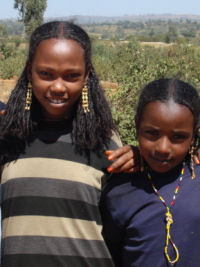"Yekokeb Berhan" Program for Highly Vulnerable Children
See also: Crosscutting Issues
Date of Operation: 2011 – 2015 Primary
Implementing Partner: Pact
Other Implementing Partner(s): FHI 360, ChildFund International (CFI), and numerous local NGOs
Regions of Operation: Nationwide in urban and semi-urban areas
Goal:
Improve well-being by strengthening care and support for orphans and other vulnerable children and their families or caretakers by strengthening systems and structures to deliver quality essential services and increase resiliency.
Objectives:
- Develop systems, structures and frameworks that prioritize the developmental needs of children
- Increase availability of and access to high quality services for children
- Strengthen community structures that can respond to the unique needs of orphans and their families
- Provide a learning mechanism that promotes evidence-based decisions and policy making
Description:
The Highly Vulnerable Children program works to have a child-focused social welfare framework in place, which ensures that orphans and vulnerable children and their families, including those affected by HIV/AIDS, can access quality and appropriate services and are empowered to lead healthy, productive and fulfilling lives. Over the five years of implementation, the program will reach 500,000 highly vulnerable children throughout Ethiopia.
The program builds on existing strengths at the family, household, community and government levels to support the needs of vulnerable children. At the heart of service delivery to children is family-centered care management which recognizes that the wellbeing of a child depends on the wellbeing of other household members. Highly vulnerable children and their families receive age-appropriate, inclusive services in seven areas: economic strengthening, education, food and nutrition, health, care and protection, psycho-social support and shelter.
The program also works in partnership with all government administrative levels and a variety of civil society organizations to roll out national quality frameworks for service delivery, strengthening their capacity to sustain program impacts and provide ongoing services to children and their families or caretakers.
Expected Results:
- Strengthen the capacity of regional and local government and civil society to collaboratively provide, manage, and monitor integrated, comprehensive care to highly vulnerbale children and their families
- Increase access to health and social services for 500,000 children
- Increase the capacity of community members and households to meet the basic needs of affected children
- Strengthen shared learning and evidence base to improve programming and inform policy and program investment
See also: UNICEF

